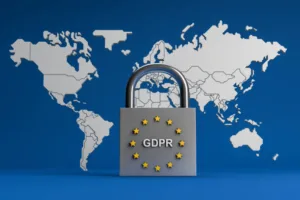Data:

In today’s digital world, data breaches are becoming a common threat to many types of enterprises in the modern digital world. The consequences go well beyond just harming an organisation’s image; they penetrate the organisation’s finances and leave a path of destruction in their wake. Prepare yourself for an eye-opening adventure as we unveil the complex web of expenses and long-term effects that require reevaluating data security procedures.
Let’s examine the components of a data breach before delving into the financial fallout. Imagine a sophisticated cyberattack in which attackers breach the digital information fortress. Once entered, they steal confidential information, financial records, and trade secrets. The consequences extend beyond data loss; they also serve as a trigger for a domino effect of financial ramifications.
Navigating the Initial Storm: Unveiling the Direct Expenses of a Security Breach
Embarking on the tumultuous journey of a security breach, the initial wave of financial turmoil surges through organisations, leaving a trail of direct expenses in its wake. Brace yourself as we delve into the intricacies of this first wave, exploring the nuanced components that contribute to the fiscal tempest.
1. Investigation and Remediation: Unravelling the Cyber Intrusion
Forensic Expertise: Forensic teams are akin to digital detectives, deciphering the intricacies of the breach. Their expertise commands a premium, driving up the investigation costs as they meticulously dissect the attack, identify the exposed data, and strive to contain the damage.
Legal Counsel: Navigating the legal labyrinth requires the counsel of legal experts well-versed in cybersecurity. Legal professionals guide the organisation through compliance intricacies, contributing to the escalating hourly fees that accrue during the investigation and subsequent remediation efforts.
IT Remediation: Restoring the integrity of compromised systems demands swift and efficient IT remediation. This involves not only fixing the immediate vulnerabilities but also fortifying the entire digital infrastructure, incurring substantial licencing costs and additional expenditures.
2. Regulatory Fines and Lawsuits: Navigating the Legal Storm
Governmental Accountability: Governments worldwide hold organisations accountable for safeguarding sensitive data. Breaches trigger stringent regulations, such as GDPR or CCPA, resulting in potentially crippling fines for non-compliance. This financial penalty adds a weighty dimension to the aftermath of a breach.
Customer Lawsuits: The financial ripples extend further with the looming threat of customer lawsuits seeking compensation for damages. Legal battles can ensue, compelling organisations to allocate significant resources to defend against or settle these legal claims.
3. Customer Notification and Credit Monitoring: Minimising Fallout
Communication Expenses: Transparency is crucial in the aftermath of a breach. Companies are compelled to inform affected customers, necessitating extensive and costly communication campaigns. Mailing, call centre resources, and digital communication channels contribute to the financial strain.
Credit Monitoring Services: As a gesture to mitigate potential fallout and rebuild trust, breached companies often provide affected individuals with years of free credit monitoring services. While a valuable offering, it imposes an additional financial burden on the organisation.
4. System Upgrades and Security Investments: Building Resilience
Security Overhauls: To fortify against future breaches, organisations embark on comprehensive security overhauls. This involves significant investments in software upgrades and incorporating the latest cybersecurity technologies to erect a more robust defence infrastructure.
Increased IT Staff: The commitment to enhanced security necessitates the bolstering of IT personnel. Additional hires, training programmes, and the expansion of the IT workforce contribute to the financial implications of the breach response.
Business Disruption Costs:
Implementing system upgrades and security measures often disrupts regular business operations. The associated costs, stemming from downtime and potential productivity losses, add to the multifaceted financial toll.
Read more: Unlocking the Secrets of Data Privacy Principles
The Ripple Effects on The Financial System: Breaking Down The Real Costs

1. Operational Disruptions: Downtime Costs
When businesses deal with system outages, they impede service delivery and productivity. Revenue Loss: Following a data breach, there may be a decline in client confidence, which will cut into revenue.
2. Reputational Damage: Erosion of Customer Trust
Following public disclosure of the breach, customer trust declines, which may result in customer attrition and a damaged reputation for the brand. Public Relations Expenses: Significant PR work is required to win back the public’s faith, which raises the price even more.
3. Post-Breach Security Investing: Enhanced Security Measures
Businesses must strengthen their security framework by funding cutting-edge equipment, personnel development programmes, and all-encompassing cybersecurity plans.
4. Extended-Term Repercussions: Premiums for insurance
Insurance rates surged after a hack because insurers saw a higher risk. Stock value swings: Because a breach is seen to generate instability, publicly listed corporations frequently experience swings in their stock value.
The Repercussions: Acquired Knowledge and Continued Expenses

Following the breach, the company goes through a period of introspection and gains important insights from the experience. Nevertheless, the financial cost endures:
1. Continuous Remedial Expenses: Credit Monitoring Services
To reduce the possibility of compromised data being misused, credit monitoring services should be offered to impacted parties. Employee Training Initiatives: Constant investments in cybersecurity training for staff members will strengthen the human component of the security architecture.
2. Liabilities: Class Action Lawsuits
Businesses may be subjected to protracted legal disputes as a result of class-action lawsuits, which can put a burden on their finances.
3. Strategic Reevaluation: Business Strategy Adjustment:
A data breach frequently prompts a review of business strategies, possibly including changes to investments and goals.
4. Costs of Regulatory Compliance: Tighter Compliance Guidelines
To comply with changing regulations, organisations might have to develop stricter compliance procedures, which would come at an added expense.
A Resilient Financial Future: Investing in Data Security

Data breaches can have devastating financial consequences that could overwhelm firms with unmanageable costs in the turbulent world of digitalization. Nevertheless, a deliberate investment in data security stands out as a ray of hope amid the chaos. Imagine that this trip isn’t just an expense but rather the building of a stronghold that will protect your most valuable resources: the future viability of your business and the confidence of your clientele.
1. Implementing Preventive Cybersecurity Measures: Building Digital Barriers
Think of your company as a castle from the Middle Ages when exercising firewall vigilance. To repel malevolent intruders, proactive cybersecurity measures serve as strong external walls. Intrusion detection systems, firewalls, and threat information that are updated regularly serve as the foundation and greatly reduce the likelihood of breaches.
Entire Digital Terrain: Visualise your electronic terrain as an expansive realm, with every gadget functioning as a sentry securing its boundaries. By providing complete defence against malware, ransomware, and other cyber threats, endpoint security investments are like arming every sentinel with cutting-edge armour.
Conduct regular vulnerability assessments to keep an eye on anything digital in your domain. Point out vulnerabilities, strengthen defences, and make the cyber defences more resilient to intrusions. With this calculated risk, you protect your kingdom from unexpected attacks by anticipating weaknesses.
2. Securing the Treasure Trove with Sturdy Data Governance Procedures
You see your data as the kingdom’s hidden wealth, according to Data Encryption Bastions. Encrypting this treasure inside a strong castle is similar to putting strong encryption rules in place. Secure data is unreadable and elusive, preventing important information from getting into the wrong hands even if attackers manage to get past the outside defences.
Building access control ramparts around your data citadel is a good idea. Evaluate who has access to the inner sanctum and strategically provide rights. The careful oversight of this organisation protects against outside intrusions seeking to take advantage of insider access as well as internal dangers.
Join a brigade of incident response knights who are prepared to act quickly in the event of a breach. To reduce costs and prevent the escalation of any damages, their training focuses on prompt detection, containment, and remediation.
3. Training of Employees: Strengthening the Human Factor
Phishing Resilience: Think of your staff as watchful citizens, the first to arrive at the scene to fend off cunning assaults. Extensive training programmes enable them to identify phishing attempts and the nuanced strategies used by intruders trying to get past the digital barriers. People on the lookout for potential threats are a vital resource for preventing them.
Workforce armour: Equip your employees with security hygiene practices. The group’s defence systems are strengthened via ongoing instruction, simulated attacks, and regular drills. Investing in this makes your staff resilient protectors who can survive the constant barrage of new and emerging online threats.
4. Beyond Immediate Costs: The Long-Term Horizon
Envision both the short-term and long-term financial consequences as you set out on this road of strategic investment. Your commitment to data security is continuous, much like that of a castle that needs regular upkeep. It’s the recipe for a strong future—defending your realm against the enduring dangers that cross cyberspace.
5. Emphasise Data Security for Financial Well-Being as a Call to Action
There is a strong call to action that comes out of this story of strategic investment. As the foundation of your financial stability, give data security top priority. Accept it not as a purely optional cost but as an essential investment that protects your company from the disastrous financial effects of data breaches. Use data security as a compass to help you navigate the digital waters and steer towards a robust and successful future.
Read More: 12 Tips to Maintaining Clean and Secure Digital Assets
Conclusion
In summary, the financial ramifications of a data breach go well beyond the time it takes to fix the problem. They leave a lasting impression on an organisation’s strategic, operational, and reputational aspects. A proactive approach to cybersecurity becomes critical as organisations traverse the digital realm; in this instance, an ounce of prevention greatly outweighs the pounds of cure in terms of money and reputation. It’s not just about protecting data; it’s also about preserving the organisation’s lifespan and financial stability in a networked digital world.










